Khyber Pakhtunkhwa is home to a wide variety of birds, from migratory species to native birds. This beautiful province of Pakistan is a haven for birdwatchers who come to observe the many species of birds that inhabit the region.
With its rich biodiversity, Khyber Pakhtunkhwa is a great destination for birders of all levels. From the majestic Himalayan vulture to the tiny, delicate white-crested laughingthrush, there is something for every bird lover.
With its diverse landscape, ranging from the snow-clad mountains of the Hindu Kush to the lush green plains of the Potohar Plateau, Khyber Pakhtunkhwa is a paradise for birds and birdwatchers alike.
1. Chukar
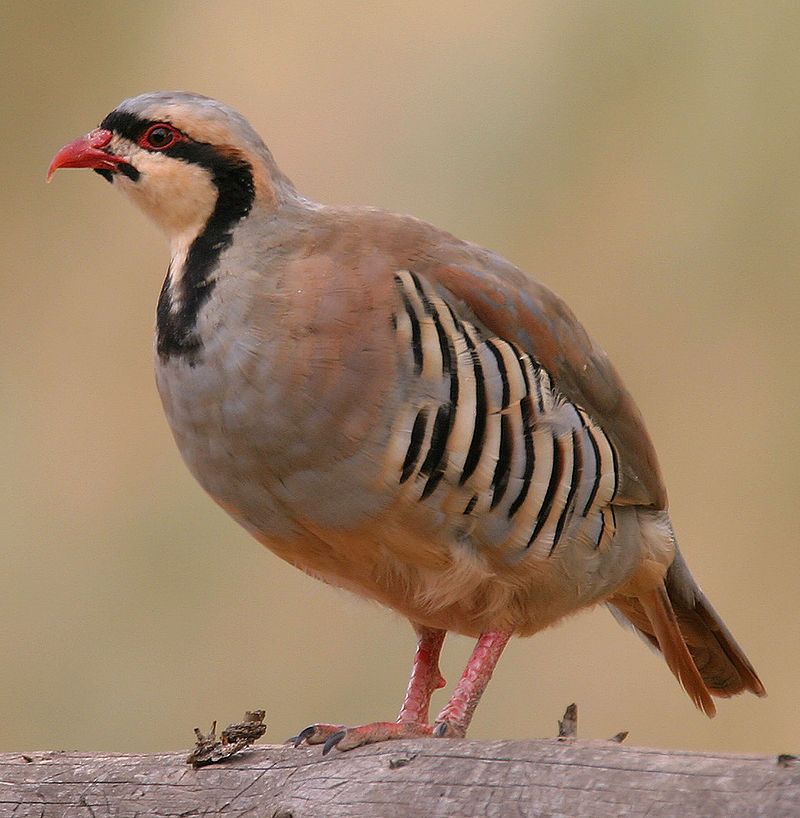
The chukar partridge, also known as simply chukar, is a type of bird belonging to the pheasant family, Phasianidae, native to the Palearctic region.
It is an upland gamebird and is considered to be part of a superspecies complex, which includes the rock partridge, Philby’s partridge and Przevalski’s partridge. In the past, these species were often treated as if they were the same species, due to their many similarities.
However, they have since been identified as distinct species with their own unique characteristics.
| Kingdom | Animalia |
| Phylum | Chordata |
| Class | Aves |
| Order | Galliformes |
| Family | Phasianidae |
| Genus | Alectoris |
| Species | A. chukar |
2. Rock Dove
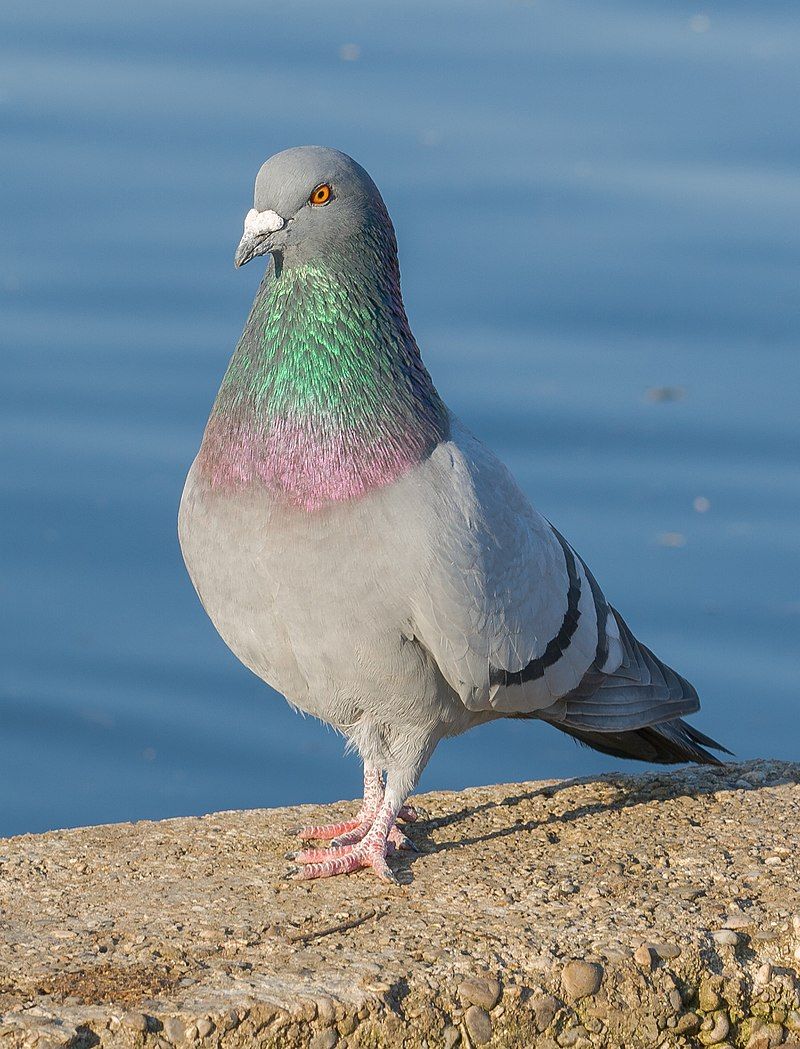
The rock dove (also known as the rock pigeon or common pigeon) is a species of bird within the Columbidae family. It is commonly referred to simply as the “pigeon”. The domestic pigeon that is seen around the world today is descended from the rock dove species.
This is made evident by the fact that when domestic pigeons escape their captivity and become feral, they join and contribute to the already existing wild populations of rock doves. This has led to an increase in the number of feral pigeons around the world.
| Kingdom | Animalia |
| Phylum | Chordata |
| Class | Aves |
| Order | Columbiformes |
| Family | Columbidae |
| Genus | Columba |
| Species | C. livia |
3. Laughing Dove
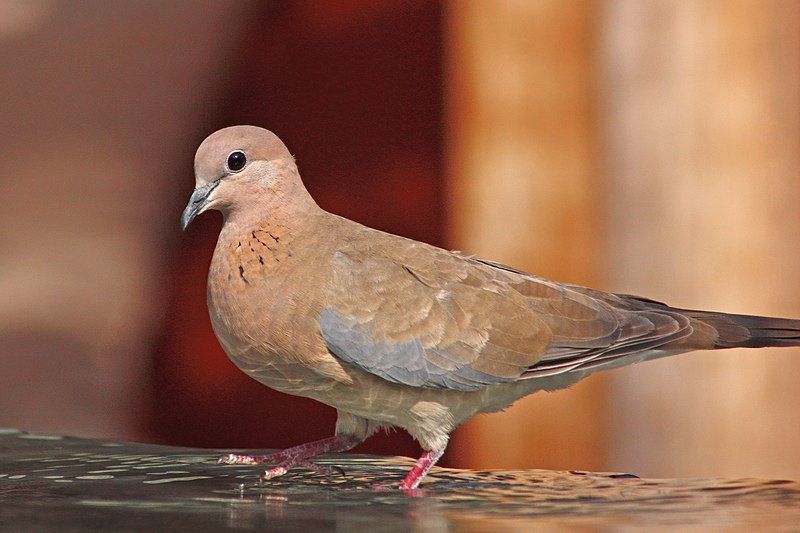
The Laughing Dove is a small species of pigeon native to Africa, the Middle East, South Asia, and Western Australia. It is an attractive bird, with a gray-brown back and wings, and pinkish underparts.
The Laughing Dove is a resident breeder, meaning that it breeds in the same area where it lives all year round. The species has also established itself in the wild after being released from Perth Zoo in 1898.
This population of Laughing Doves is now well established in the wild and is a common sight in many areas of Western Australia. The Laughing Dove feeds on grains, fruits, and small insects, and can often be seen foraging on the ground in small groups.
Its characteristic cooing call can be heard day and night, giving the species its popular name.
| Kingdom | Animalia |
| Phylum | Chordata |
| Class | Aves |
| Order | Columbiformes |
| Family | Columbidae |
| Genus | Spilopelia |
| Species | S. senegalensis |
4. Black Francolin
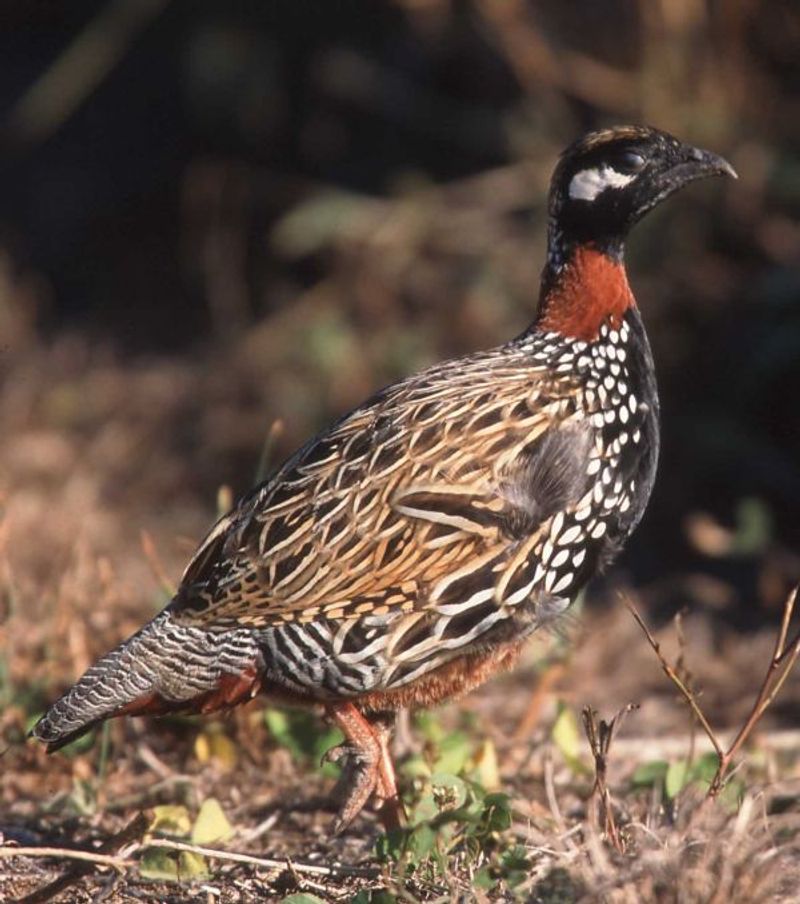
The black francolin is a type of bird belonging to the family Phasianidae, which is part of the order Galliformes. It is a game bird, also known as the black partridge, that is native to Southeast Asia and the Indian subcontinent.
It is renowned for its beautiful black and white striped feathers and its loud, high-pitched call. The black francolin has become the state bird of Haryana state, India, as it is an important part of the local ecology and culture.
The black francolin is a terrestrial bird, found in grasslands, scrub, and dry open woodlands. Its diet consists mainly of insects, seeds, and fruit, which it collects from the ground. It is a ground-dwelling bird, which nests in the ground, laying around seven eggs at a time.
It is also a very social bird, living in small groups of up to fifteen individuals. The black francolin is an important species in the conservation of biodiversity in the region. It is a popular gamebird, enjoyed by hunters and birdwatchers alike.
The population of this species is in decline due to habitat loss and hunting pressure, so conservation efforts are necessary to ensure the survival of the species.
In recognition of its importance, the black francolin has been designated as the state bird of Haryana state, India, in order to raise awareness of its plight and to promote its conservation.
| Kingdom | Animalia |
| Phylum | Chordata |
| Class | Aves |
| Order | Galliformes |
| Family | Phasianidae |
| Genus | Francolinus |
| Species | F. francolinus |
5. Red-Collared Dove
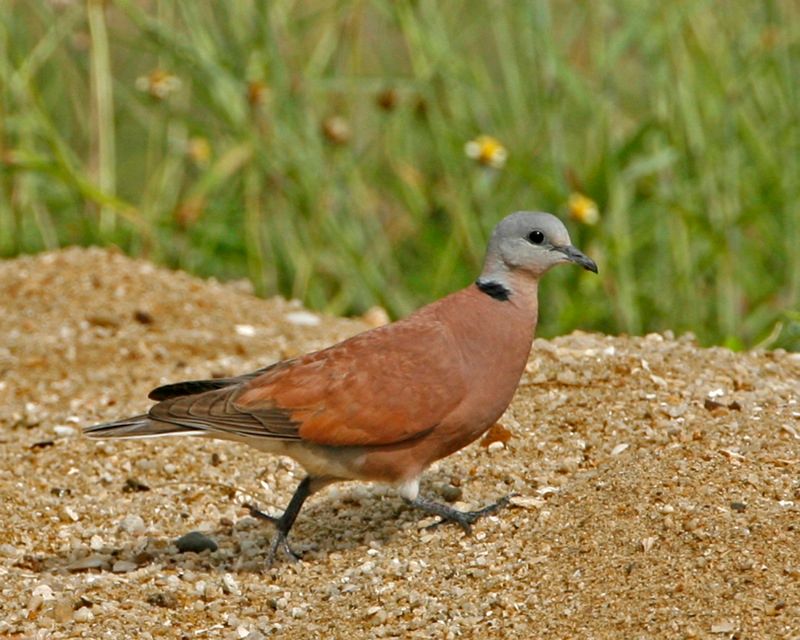
The red-collared dove is a small pigeon which is a resident breeding bird in the warm climates of Asia.
It is easily distinguished by its red-brown body and blue-grey head of the male, while the female is much plainer and has a pale brown plumage similar to that of the larger Eurasian collared dove.
This species of dove is found across a wide range of habitats, from dense forests to agricultural lands, and is often seen in urban areas. Red-collared doves are generally found in pairs or small groups, feeding on seeds, fruits, and insects.
They are known to be quite vocal, producing a variety of low-pitched cooing sounds. The red-collared dove is a relatively common species and is not currently threatened.
| Kingdom | Animalia |
| Phylum | Chordata |
| Class | Aves |
| Order | Columbiformes |
| Family | Columbidae |
| Genus | Streptopelia |
| Species | S. tranquebarica |
6. Demoiselle Crane
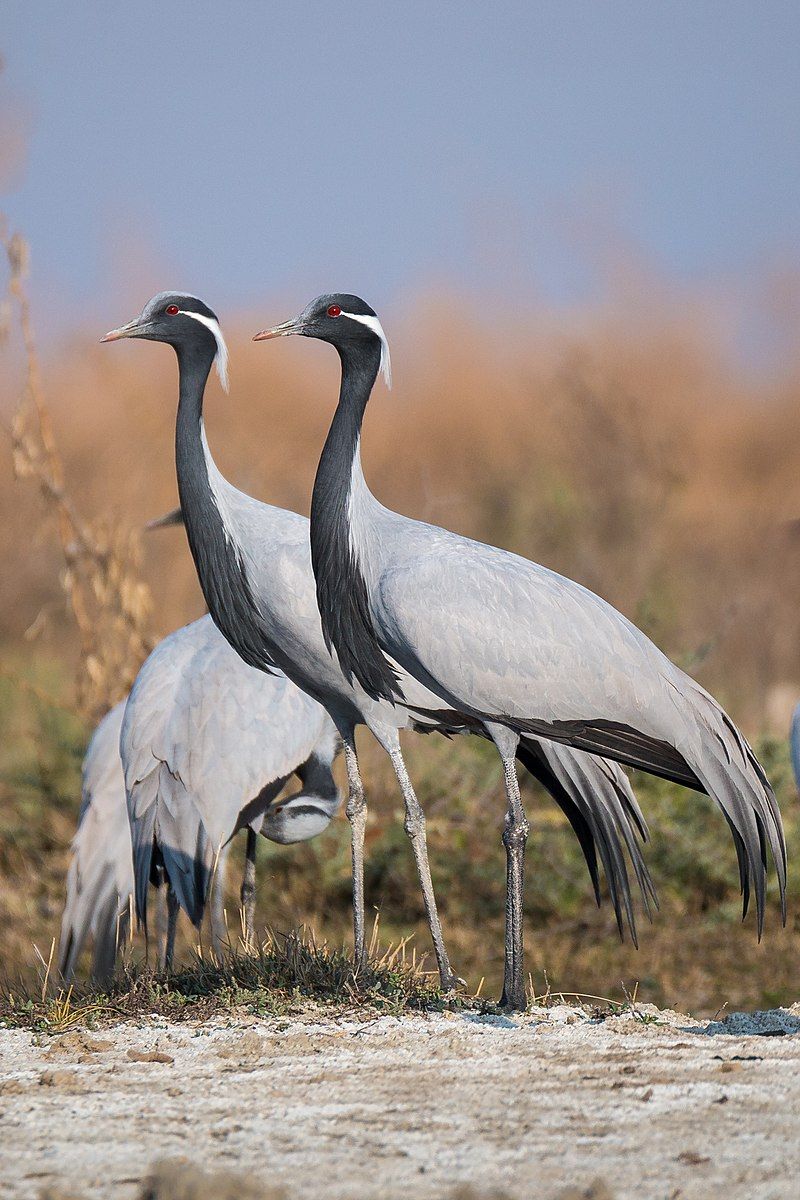
The demoiselle crane is a species of crane found in the Eurasian continent, spanning from the Black Sea to Mongolia and Northeast China. It is a migratory bird, making seasonal migrations to its breeding grounds.
The primary breeding population of the demoiselle crane is located in Central Eurosiberia, however, there is also a small breeding population located in Turkey. Migration is essential for the survival of the demoiselle crane as it allows them to take advantage of seasonal resources in different regions.
During winter, they travel to warmer areas in the south, while in the summer they migrate to cooler regions.
The crane is a social bird, often travelling in large flocks during its migrations. The demoiselle crane is listed as a vulnerable species due to the destruction of its wetland habitats and overhunting.
This has resulted in a decline in the crane population, threatening the species’ existence. Conservation efforts are being taken to protect the crane’s habitats and to ensure its survival. These efforts include creating protected areas and implementing hunting regulations.
| Kingdom | Animalia |
| Phylum | Chordata |
| Class | Aves |
| Order | Gruiformes |
| Family | Gruidae |
| Genus | Grus |
| Species | G. virgo |
7. See-See Partridge
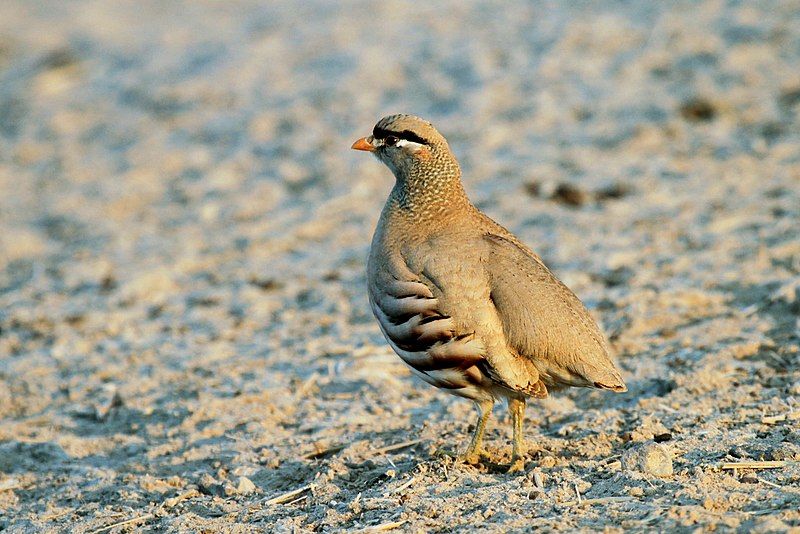
The See-See Partridge is a bird of the Phasianidae family, which is part of the Galliformes order. This order is comprised of birds that are also known as gallinaceous birds.
These birds are mainly found in the area between southeast Turkey and Iran, as well as in Syria, Iraq, and Pakistan. They are considered to be game birds, as they are largely hunted and consumed as a food source in these countries.
The See-See Partridge is a medium-sized gamebird, usually measuring between 25 and 30 cm in length. It has long, pointed wings and a stocky body frame. Its feathers are usually a combination of browns and grays, and it has bright red eyes.
It is a shy bird that prefers to stay out of sight, making it difficult to spot in the wild. This partridge species is omnivorous, and its diet consists mainly of seeds, insects, and small invertebrates.
It typically lives in shrubby or grassy habitats, and it prefers to stay in open areas near cover. The See-See Partridge is monogamous and usually mates during the spring and early summer months.
The female will lay a clutch of 6-7 eggs, which she will incubate for about three weeks. The chicks are usually ready to leave the nest a few weeks after hatching. Overall, the See-See Partridge is an important species of gamebird in the countries where it is native.
It is hunted for its meat as well as for sport, and it is also an important part of the ecosystem in these areas.
| Kingdom | Animalia |
| Phylum | Chordata |
| Class | Aves |
| Order | Galliformes |
| Family | Phasianidae |
| Genus | Ammoperdix |
| Species | A. griseogularis |
8. Gadwall
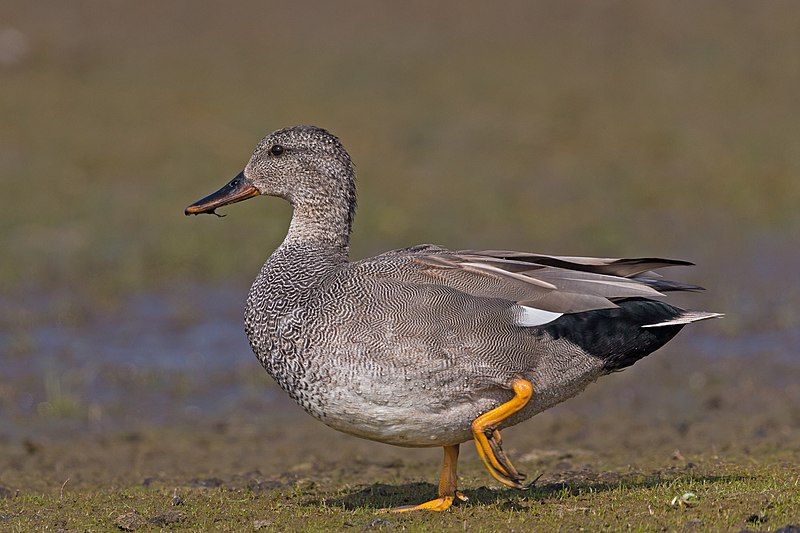
The gadwall is a species of dabbling duck belonging to the family Anatidae. It is a widely distributed species that can be found in a variety of habitats across North America and Eurasia, including lakes, marshes, and other wetlands.
The gadwall is a medium-sized duck, measuring between 17 and 22 inches in length and weighing up to 3 pounds. It has a greyish-brown back, a white underside, and a black tail. Its head is brown with a white patch above the eye.
The male gadwall has a striking black and white head pattern, with a white band that starts at the bill and wraps around the back of its head. The gadwall feeds primarily on aquatic plants and the seeds of aquatic plants and grasses.
It will also eat insects, mollusks, crustaceans, and small fish. In the winter, it will supplement its diet with grains and other vegetation. Gadwalls typically breed during the summer months in temperate climates.
They prefer shallow, vegetation-rich wetlands for nesting and typically lay their eggs in a shallow depression in the ground. The female gadwall will lay between 6 and 12 eggs, which hatch in about 28 days.
The female will incubate the eggs and care for the ducklings until they are able to fly. The gadwall is a common and widespread species, but its numbers are declining due to habitat loss. It is a species of least concern, according to the IUCN Red List.
Conservation efforts are needed to ensure the continued survival of this species.
| Kingdom | Animalia |
| Phylum | Chordata |
| Class | Aves |
| Order | Anseriformes |
| Family | Anatidae |
| Genus | Mareca |
| Species | M. strepera |
9. Northern Shoveler
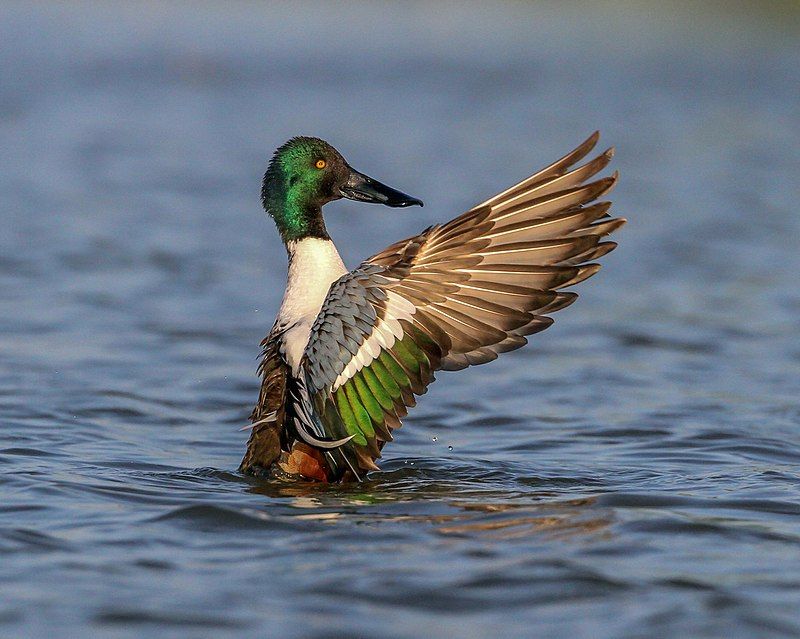
The northern shoveler is a migratory duck which is found in many parts of the world. It is known as the shoveler in the United Kingdom, and is a fairly common bird.
This duck breeds in the northern parts of Europe, and across the Palearctic, which is the region which includes Europe, Asia, and North Africa. It is also found across most of North America.
During the winter months, the northern shoveler migrates to southern Europe, the Indian subcontinent, Southeast Asia, Central and northern South America. This bird is able to migrate such large distances, showing the impressive ability of the species.
| Kingdom | Animalia |
| Phylum | Chordata |
| Class | Aves |
| Order | Anseriformes |
| Family | Anatidae |
| Genus | Spatula |
| Species | S. clypeata |
10. Common Crane
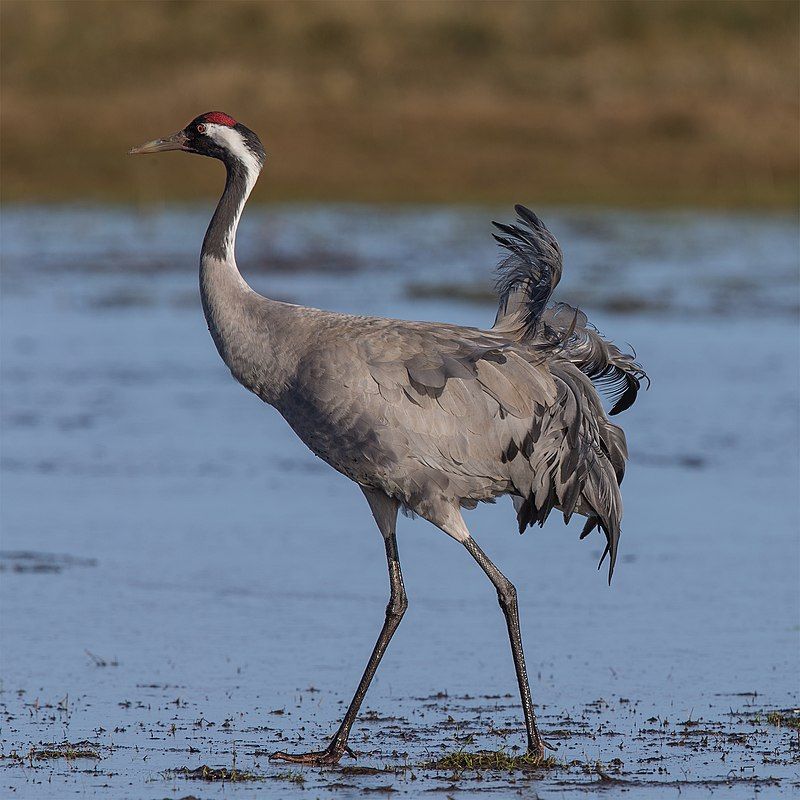
The Common Crane, also known as the Eurasian Crane, is a species of bird that belongs to the family Gruidae, also known as the ‘cranes’. It is a medium-sized bird that has a wide distribution throughout Europe.
In addition to the Common Crane, two other crane species, the Demoiselle Crane and the Siberian Crane, are also found in Europe albeit infrequently.
The Demoiselle Crane is more commonly found in the western parts of the continent while the Siberian Crane is generally restricted to the eastern parts of Europe. The Common Crane is the only species of crane that is common and regularly found throughout the entire continent.
| Kingdom | Animalia |
| Phylum | Chordata |
| Class | Aves |
| Order | Gruiformes |
| Family | Gruidae |
| Genus | Grus |
| Species | G. grus |
Conclusion
Birds in Khyber Pakhtunkhwa are a major asset to the region. They provide many benefits to the environment, such as controlling insect populations and pollinating plants.
Furthermore, they are also a source of enjoyment and wonder for many people, providing opportunities for birdwatching and nature appreciation. The region is home to a variety of bird species, making it an ideal spot for birdwatching and conservation.
As such, it is important to protect and conserve the birds of Khyber Pakhtunkhwa for future generations.